Sunlight --> Electricity
A. E. Becquerel, 1839 . He stated that we can get energy from sunlight. It took a very long time until we made that.
Bell labs, 1950s , Solar panel was invented. Efficiency 6% at that moment. Very expensive. Only for satellites and so on.
People thought a lot about that.
Energy crisis, 1970s.
1st generation
Crystalline silicon, Expensive, High material usage, Embodies a lot of energy
crystalline
结晶的
晶质的
2nd generation
Think file solar cells
Amorphous silicon: Lower temperature ( few hundred degress), Inherent problems (Staebler–Wronski effect
http://en.wikipedia.org/wiki/Staebler%E2%80%93Wronski_effect)
Here is a brife introductions of Staebler–Wronski effect:
The Staebler–Wronski Effect (SWE) refers to light-induced metastable changes in the properties of hydrogenated amorphous silicon.[1]
The defect density of hydrogenated amorphous silicon (a-Si:H) increases with light exposure, causing an increase in the recombination current and reducing the efficiency of the conversion of sunlight into electricity.
It was discovered by David L. Staebler and Christopher R. Wronski in 1977. They showed that the dark current and photoconductivity of hydrogenated amorphous silicon can be reduced significantly by prolonged illumination with intense light. However, on heating the samples to above 150 °C, they could reverse the effect.[2]
amorphous
*[ә'mɒ:fәs]
a. 无定形的, 无组织的
【化】 非晶形的; 无定形的
【医】 无定形的, 非晶形的
But the 2nd generation solar technology has solved the problems as the followings:
1) high embodied energy
2) high manufacturing temperatrue
3) high materials use
But introduced
1) Poor stability
Thin film thechnologies
1) Amorphous silicon
2) Cadmium telluride
3) CIGS (Copper indium gallium selenide. more from wiki: http://en.wikipedia.org/wiki/Copper_indium_gallium_selenide)
cadmium
*['kædmiәm]
n. 镉
【化】 镉Cd
【医】 镉(48号元素)
telluride
*['teljuraid]
n. 碲化物
【医】 碲化物
All inherently unstable
1) back contacts
2) sensitivity to atmosphere (water / oxygen)
3rd generation
1) lower cost
2) thinner films
3) Lower temperatures
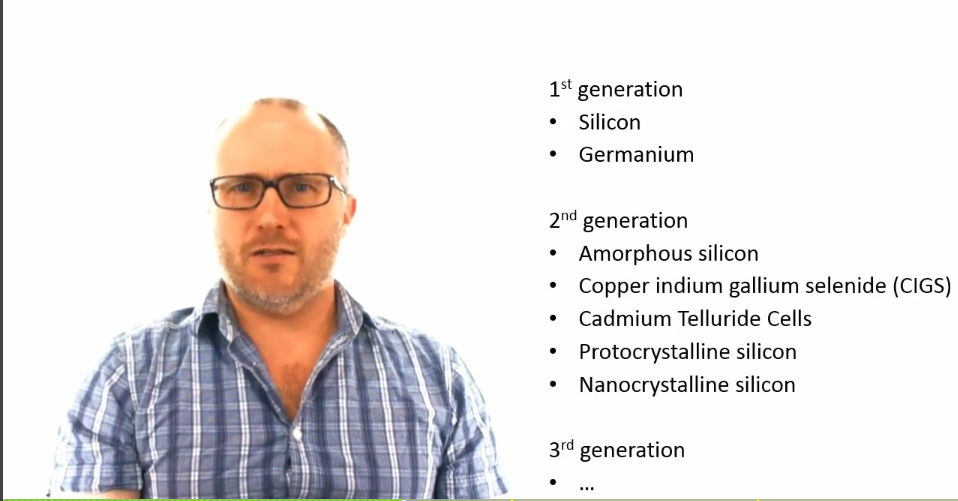
1) > 10% efficiency
2) Thin
3) low materials usage
4) Fast manufacture
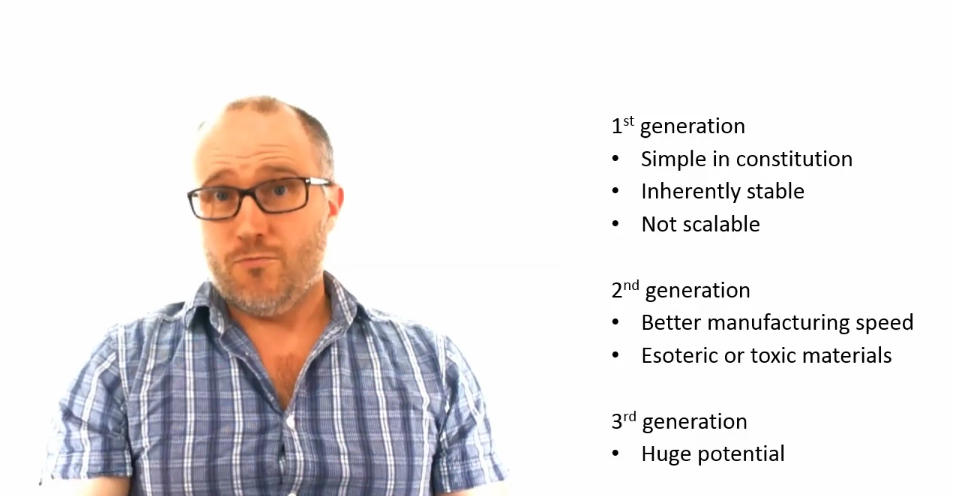
what 3rd generation publications are going on?


Publication shows something. But comparing to computer technology, solar energy is upgrading way too slow...
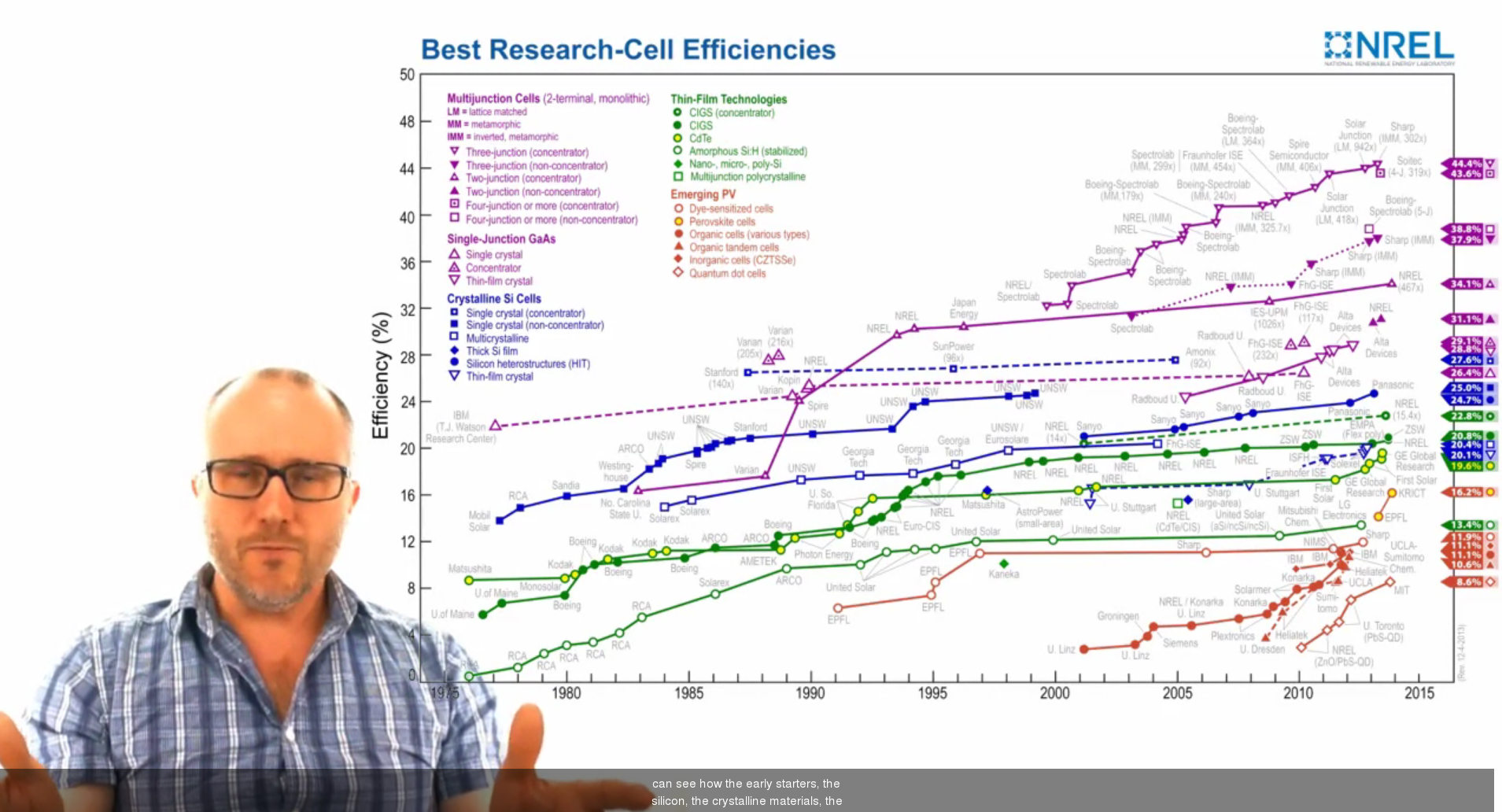
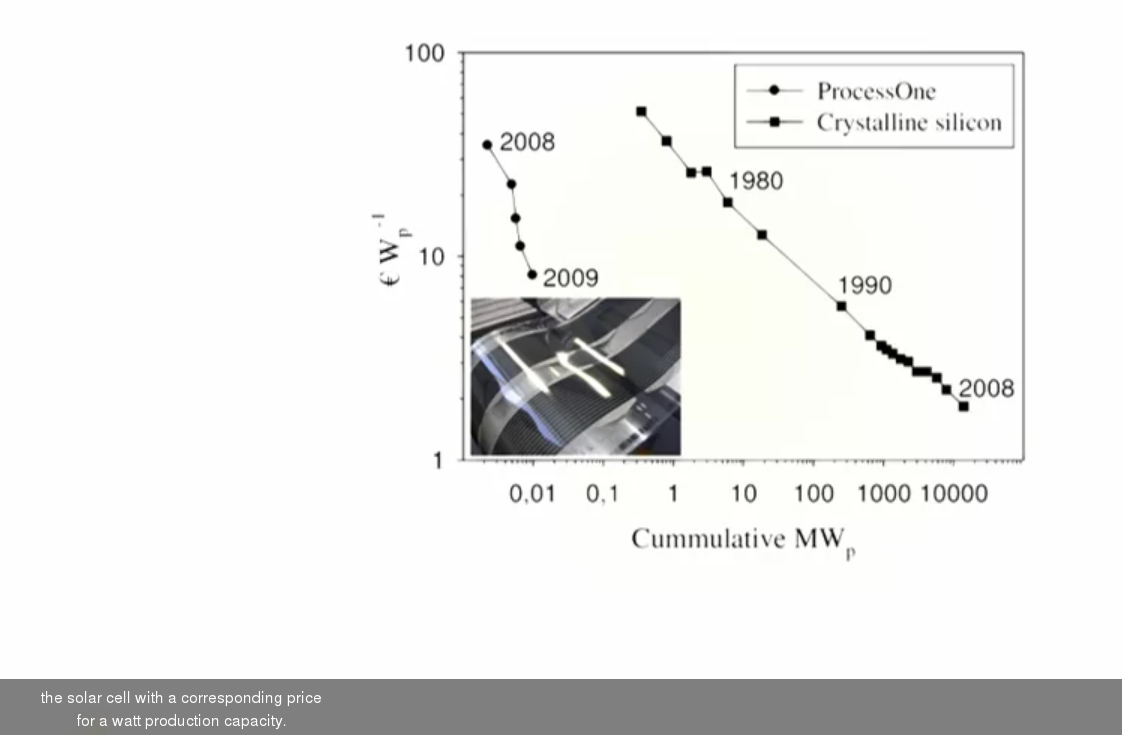
Organic photovoltacis ( poor performance at the present )
1) Scalable
2) no toxic material
3) low environment impact
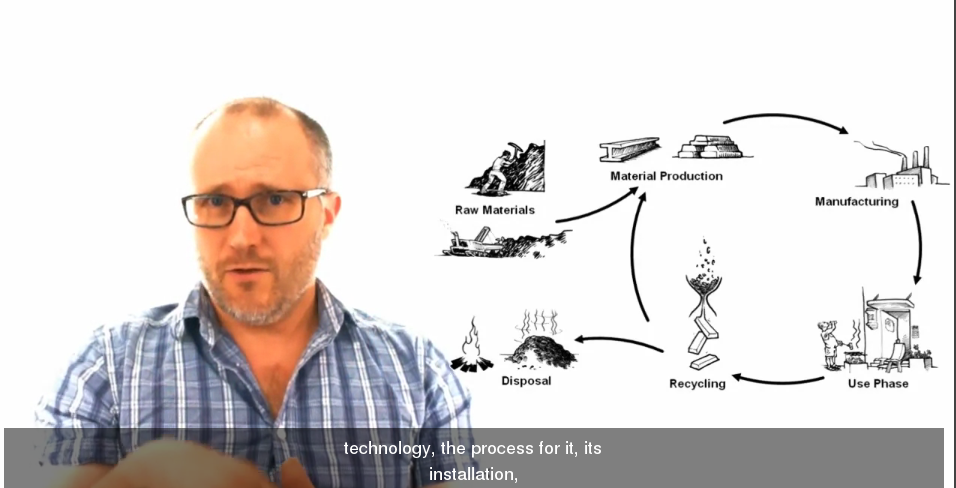
cycling
Maybe this is the future. but at the present this kind of organic solar cells need real technology improvements.